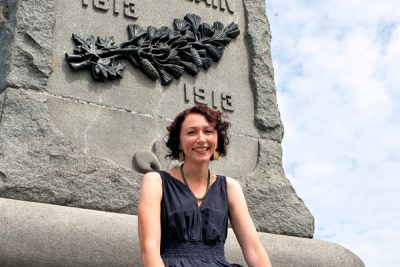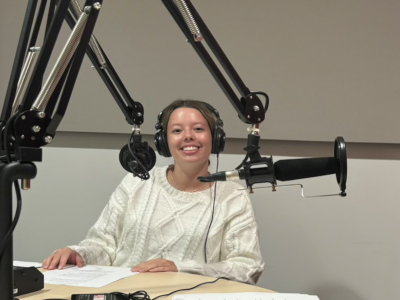An Indigenous historical preservation project co-led by Miranda Brady, associate professor in Communication and Media Studies and co-director of the Centre for Indigenous Research, Culture, Language, and Education (CIRCLE), has won a Partnership Engage Grant from the Social Sciences and Humanities Research Council of Canada.

Miranda Brady, Associate Professor
Other researchers from Carleton University involved in the project include Kahente Horn-Miller (School of Indigenous and Canadian Studies), and Anna Hoefnagels (School for Studies in Art and Culture), as co-applicants, and John Medicine Horse Kelly (Journalism) and Martha Attridge Bufton (MacOdrum Library), as collaborators.
What does your project look at?
The Native North American Travelling College (NNATC) has been serving the Akwesasne Mohawk Nation since 1969. A visit to the NNATC reveals young people and older generations alike brimming with pride in their Haudenosaunee culture. The college has worked for nearly 50 years to offset the negative effects of a violent colonial history and to demonstrate the importance of traditional culture for healing and building community. It has done this through cultural workshops in and outside of the community that bring elders and youth together and publication of multimedia materials on traditional teachings. The college also employs a travelling troupe of educators, mostly led by young people, who visit local schools to build goodwill with the community’s non-Indigenous neighbours and counteract racist stereotypes.
Despite its central role as a cultural hub that serves as a source of pride in Akwesasne, the NNATC has yet to document its rich history. In addition to celebrating an important cultural institution, a history of the NNATC would be beneficial as the college is frequently asked for data indicating its past successes for the grant funding on which it relies.
Researchers from Carleton University will partner with NNATC and its staff to collect, document, and preserve its history. The overall goal of this project is to strengthen the programming and support provided by the NNATC through research that demonstrates its importance as a cultural institution. As part of this effort, we will collect stories and background that will be used to write and publish a history of the NNATC following the project. This will include interviews with former and current staff, students, and community members identified by the NNATC and snowball sampling, as well as archival research of records and the college’s audio-visual (AV) archive.
Our objectives will be to: collect and compile raw data for use by the NNATC and research partners on NNATC’s history and its role in Akwesasne and broader Haudenosaunee communities; disseminate findings in a variety of formats to meet stakeholder needs including Akwesasne, other Haudenosaunee communities, and Indigenous and non-Indigenous scholars; provide quality experiences to research assistants from Carleton and Akwesasne in culturally appropriate research and knowledge mobilization for various audiences; and strengthen existing links between Carleton and Akwesasne and explore future partnership opportunities.
Why is this research important?
For NNATC, this project will provide much needed data, act as an opportunity to strengthen programming and competitiveness in funding applications, and build bridges into higher education, which may benefit Akwesasne youth interested in attending university. NNATC staff have also expressed the importance of making accessible for future generations the voices and teachings of elders recorded in their AV archive.
Friday, December 1, 2017 in Communication News, News, Research
Share: Twitter, Facebook



